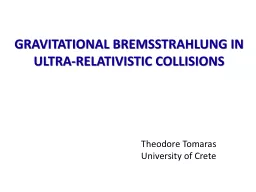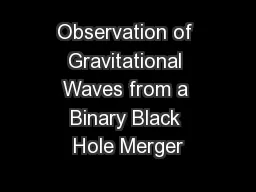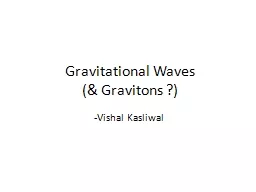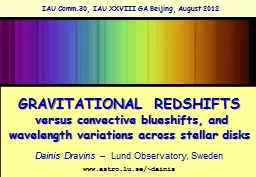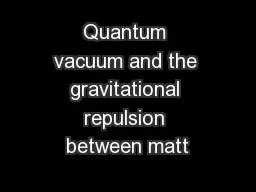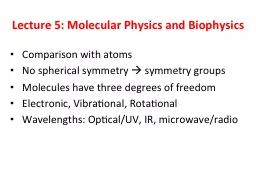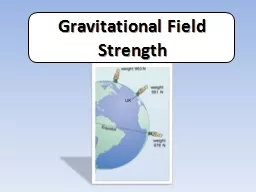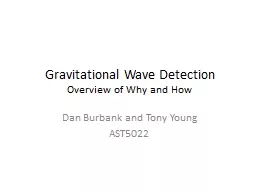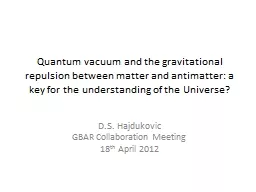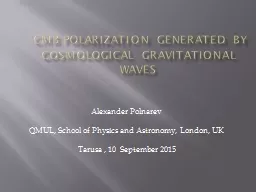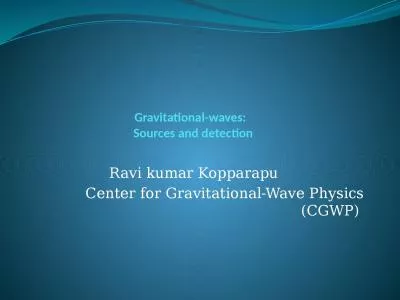PPT-GRAVITATIONAL BREMSSTRAHLUNG IN
Author : tatyana-admore | Published Date : 2016-05-03
ULTRARELATIVISTIC COLLISIONS Theodore Tomaras University of Crete Motivation The relevance of classical gravity A slightly simpler model scalar radiation The local
Presentation Embed Code
Download Presentation
Download Presentation The PPT/PDF document "GRAVITATIONAL BREMSSTRAHLUNG IN" is the property of its rightful owner. Permission is granted to download and print the materials on this website for personal, non-commercial use only, and to display it on your personal computer provided you do not modify the materials and that you retain all copyright notices contained in the materials. By downloading content from our website, you accept the terms of this agreement.
GRAVITATIONAL BREMSSTRAHLUNG IN: Transcript
Download Rules Of Document
"GRAVITATIONAL BREMSSTRAHLUNG IN"The content belongs to its owner. You may download and print it for personal use, without modification, and keep all copyright notices. By downloading, you agree to these terms.
Related Documents

